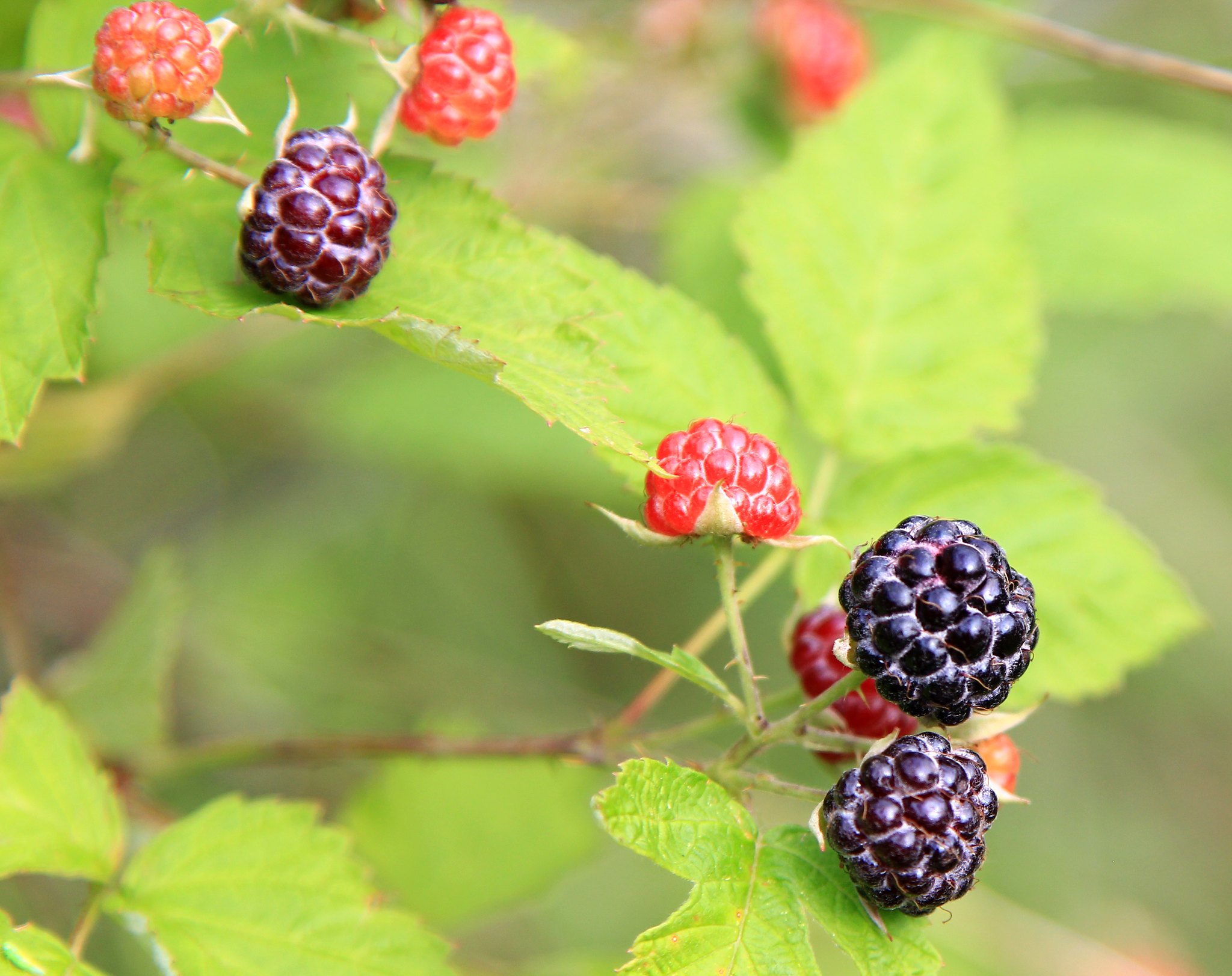Species spotlight: Black raspberry
By Mack Swenson on June 1, 2024 in Blog

You’re hiking through the woods when something catches your eye. Just a hint of red and dark purple, tucked into the blanket of green vegetation surrounding you. Upon closer observation, the pops of color are revealed to belong to a berry bush. Blackberry, perhaps? No, too much red. Raspberry? No, too much purple…
Your mysterious find is neither — meet the black raspberry. These fruits are found in woodlands, disturbed areas and roadside ditches throughout the continent, though different species are found in the east and west. The formulated flavor ‘blue raspberry,’ which is often (incorrectly) justified by the western variety’s existence, still doesn’t resemble the black raspberry in taste or color.
The black raspberry prefers partial sun and highly organic soil, though the plant itself is quite tolerant to drought and cold. In full exposure or intense shade, it may fail to produce fruit. Notice that the black raspberry is referred to as a ‘fruit’ and not a ‘berry.’ Technically, the black raspberry—like its siblings in the Rupus genus that includes the likes of blackberries and dewberries—is not a berry. They are botanically known as aggregate fruits, meaning they are composed of many drupelets—bumps on the fruit.
Regardless of its botanical classification, black raspberries sure are delicious. They’re quite popular among foragers for their flavor and ease of identification. They make fantastic additions to baked goods but also taste wonderful plain. As an added bonus, black raspberries are abundant in digestion-regulating fiber and antioxidants, which protect cells from oxidative damage. You can forage for black raspberries starting early in the summer, though harvesting season isn’t in full-swing until July. The fruits ripen over a period of weeks, arising to black raspberries’ distinctive color profile of unripe greens, partially ripe reds and fully ripe purples.
Songbirds, small mammals, foxes and raccoons are also known to eat the tasty fruits. During the winter, birds and small mammals will consume the seeds left behind, while white-tailed deer and rabbits eat the leaves. In fact, the genus Rupus includes some of the most important plants for wildlife in the southeast United States. Prior to the harvesting season, butterflies and other insects are also attracted to the pinkish or white flowers that grow in clusters of two to seven.
You don’t have to worry about misidentifying black raspberries and accidentally consuming a poisonous look alike. That’s because basically all the fruits you could mistake for black raspberries are also edible–and delicious. But, if you want to impress, you can tell black raspberries apart from their most similar lookalike, the blackberry, using a few criteria. Black raspberries leave the center portion of their fruit on the stem when picked, so they have a hollow center. When blackberries are picked, by contrast, the entire fruit comes off the stem, leaving a white or green core. Black raspberries are also hairier and sweeter.
While you can’t forage for the famous ‘blue raspberry,’ you can forage for its delicious real-life counterpart. Simply look for their distinctive—and botanically unique—mixed red and purple hues.